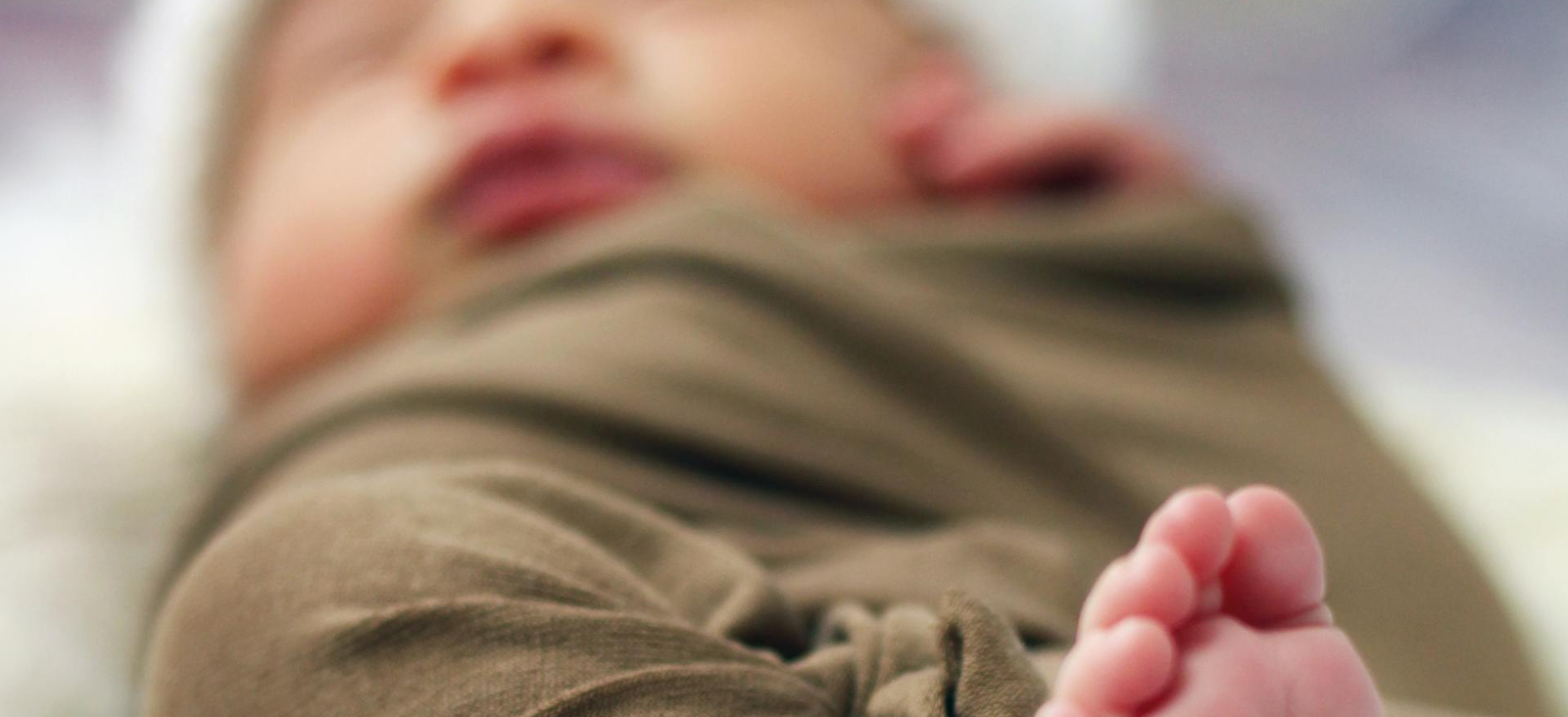Understanding Hypoxic Ischemic Encephalopathy (HIE): Causes, Symptoms, and Legal Options

When a baby is diagnosed with hypoxic-ischemic encephalopathy (HIE), a type of brain damage caused by oxygen deprivation during labor and delivery, the joy of welcoming a new life can quickly turn to fear and heartbreak. The effects of HIE can be severe and lifelong, impacting a child’s physical and cognitive development and their ability to live independently as an adult.
If you’re reading this post, chances are you or someone you love has been touched by HIE. Maybe you’re a parent struggling to come to terms with your child’s diagnosis, or maybe you’re considering taking legal action against the medical professionals you believe are responsible for your child’s condition.
At Onward Injury Law, we’ve walked countless families through this process. In this post, we’ll break down the basics of HIE, including its causes, symptoms, and the legal options available to families seeking justice and support.
What is Hypoxic Ischemic Encephalopathy (HIE)?
HIE is a neurological condition that develops when a newborn’s brain lacks oxygen or blood flow.
This condition can occur during pregnancy, labor, delivery, or shortly after birth.
Common causes of HIE
- Birth asphyxia: When a baby’s oxygen supply is cut off during labor or delivery.
- Perinatal asphyxia: When a baby’s oxygen supply is reduced or cut off before, during, or after birth.
According to the HIE Help Center, HIE affects approximately 1.5 to 2.5 per 1,000 live births in developed countries.
Symptoms and Diagnosis of HIE
The symptoms of HIE vary depending on the severity of the brain injury.
Some common signs to look out for in newborns include:
- Abnormal muscle tone (stiff or floppy)
- Weak or absent reflexes
- Seizures
- Difficulty feeding
- Irregular breathing
HIE typical severity levels
- Mild HIE: Infants may experience slight neurological impairments but generally have a good prognosis.
- Moderate HIE: Babies may have more significant neurological issues and require ongoing treatment and therapy.
- Severe HIE: Children with severe HIE often face life-long disabilities and may require around-the-clock care.
Diagnosing HIE
Doctors may use several tests and procedures to determine whether your child has HIE, including:
- Apgar scores
- Neurological exams
- Brain imaging (MRI or CT scans)
- Blood tests
Long-term Effects of HIE
Children with HIE may experience a range of long-term adverse effects, depending on the severity of their brain injury.
Some potential consequences include:
- Developmental delays
- Cognitive impairments
- Cerebral palsy
- Seizures
- Vision and hearing problems
These challenges can significantly impact a child’s quality of life and life expectancy.
Families may also face substantial financial burdens related to ongoing medical care, therapy, and assistive devices.
Medical Negligence and HIE
Sometimes, HIE may be the result of medical negligence during pregnancy, labor, or delivery.
Some examples of medical malpractice that leads to HIE include:
Delayed C-section
If a baby shows signs of distress during labor and the medical team fails to perform a timely C-section, the child may suffer from oxygen deprivation.
Fetal distress mismanagement
When doctors don’t correctly monitor or respond to signs of fetal distress, such as an abnormal heart rate, the baby may develop HIE.
Neonatal resuscitation errors
Mistakes during resuscitation, such as improper intubation or delayed resuscitation efforts, can cause HIE.
NICU mistakes
Negligent care in the neonatal intensive care unit (NICU), such as failure to monitor vital signs or administer necessary treatments, can also lead to HIE.
Legal Claims for HIE Birth Injuries
The law allows you to file a personal injury claim when healthcare worker negligence causes your child’s HIE.
The two main types of legal HIE claims available are:
- Medical malpractice: This lawsuit holds healthcare providers accountable for substandard care that causes harm to a patient.
- Birth injury: Birth injury claims specifically focus on negligence during pregnancy, labor, or delivery that results in harm to the baby.
Proving fault and causation in an HIE lawsuit
You’ll need to demonstrate:
- Duty: The healthcare provider owed a duty of care to your child.
- Breach: The provider breached that duty by providing substandard care.
- Causation: The breach of duty directly caused your child’s foreseeable HIE injury.
- Damages: Your child suffered damages as a result of the healthcare worker’s negligence.
Filing deadlines
In Illinois, the statute of limitations for filing an HIE claim is generally two years from the date of the injury or when you discover the injury.
However, there are exceptions for minor children, so it’s wise to consult with an experienced HIE personal injury lawyer to understand your legal rights and the deadlines that apply in your case.
Potential Damages in HIE Personal Injury Claims
If your HIE personal injury claim is successful, you may be entitled to several types of compensatory damages, including:
- Long-term care and treatment costs
- Developmental and educational support
- Lost earning capacity
- Pain and suffering
- Emotional distress
- Loss of quality of life
Calculating HIE damages is complex because it involves predicting the child’s future needs and limitations.
An experienced personal injury attorney can help you determine the full extent of your damages and fight for the compensation your family deserves.
Building a Strong HIE Personal Injury Case
Your Illinois HIE attorney will perform the following tasks on your behalf to build a strong HIE personal injury case for your child.
- Gather evidence, such as medical records, witness statements, and expert testimony.
- Work with medical experts to establish the cause and extent of your child’s HIE.
- Consult life care planners and economists to calculate your child’s long-term needs and damages.
- Negotiate with insurance companies and the defendant’s legal team to secure a fair settlement.
- Represent your family in court if a settlement cannot be reached.
The role of an experienced HIE lawyer is usually a game changer in personal injury litigation. Your legal counsel will guide you through the claims process, protect your rights, and fight tirelessly to secure the best possible outcome for your family.
Settlements and Outcomes in HIE Personal Injury Cases
Insurance and out-of-court settlement amounts in HIE personal injury cases vary widely depending on factors such as:
- Severity of the child’s HIE and resulting disabilities.
- Long-term care and treatment needs of the child.
- Strength of the evidence proving negligence and causation.
- Jurisdiction and specific laws that apply to the case.
Due to the complexity and uniqueness of each HIE case, we recommend having an attorney assess your claim and advise you on the potential case value instead of insurance adjusters whose only interest is to pay you the lowest possible settlement.
Don’t Let HIE Define Your Child’s Future – Take Action with Onward Injury Law
If your child has been diagnosed with HIE, you may be feeling overwhelmed, angry, and unsure of what to do next. But it’s important to remember that you have options and that you don’t have to face this alone.
At Onward Injury Law, we’re here to help you understand your legal rights and fight for the compensation your child deserves. Our experienced HIE attorneys have a deep understanding of the medical and legal issues involved in these cases, and we’re committed to holding negligent medical providers accountable for the harm they’ve caused.
You have enough on your plate right now – let us handle the legal heavy lifting so you can focus on what matters most: your child and your family. Contact us today for a free consultation.



